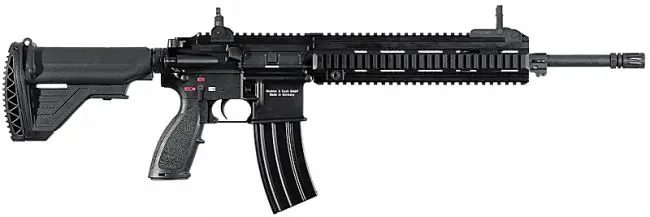Monthly Archives: December 2016
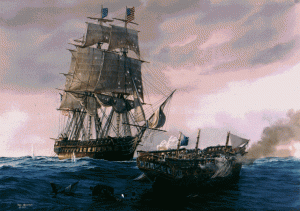
Mabus joins the ranks of those, like HMS Java in the foreground here, who tangled with the US Navy and lost.
It was a stinging defeat for the cruelest, most bitter enemy the American Navy has ever faced.
Ray Mabus’s decision to eliminate Navy enlisted ratings, which was approved by a slew of yes-man admirals including current CNO Adm. John Richardson and Chief of Naval Personnel Vice Adm. Robert Burke, and a slew of yes-man master chiefs including current MCPON Steven Giordano and his predecessor MCPON Mike Stevens, has been quietly reversed in a Christmas Week memo. Mabus’s signature was absent, with the loss of face for the Secretary’s defeat accruing to his camp follower, Richardson.
The Navy Times noted that it was all Mabus’s initiative, originally, to eliminate what he saw as an obstacle to social engineering. Imagine what greater heights the social imbroglio might have reached in the anticipated Clinton administration, where Mabus imagined himself SecDef; but, alas for the prospect of mandatory gender transitions, it was not to be.
[T]he decision was made by Navy Secretary Ray Mabus, whom multiple sources described as eager to announce the new policy before his impending departure after more than seven years atop the the sea service. Mabus, the first to broadcast this new policy Sept. 29, was motivated by a fervent desire to promote gender neutrality across the Navy and the Marine Corps, which he also oversees. He was presented with four options for removing the word “man” from nearly two dozen job titles — what the Navy calls ratings — and opted for the most extreme option.
…
Mabus, sources said, was determined to put ratings reform in motion — and on the record — before he leaves office. Gender integration, while Obama’s directive, has become a hallmark of Mabus’ tenure as Navy secretary. And he’s upset plenty of people along the way, notably within the Marine Corps, which has reluctantly opened its ground combat units to women and modified many of its job titles as well, though not to the extent that the Navy has.
The idea was always top-down, and never popular in the ranks:
When the order came down to provide feedback about possible gender-neutral ratings changes, most sailors were cynical, the [unnamed to prevent retaliation by Stevens, Giordano, et. al.] command master chief said. Many, wondered why the Navy was prioritizing the issue. “No one,” he added, “not a single sailor — across paygrade and gender lines — I spoke with saw the need to change the names of ratings based on gender neutrality.”
It was really unpopular in the ranks, and Mabus, a career politician who never has been popular in the ranks himself, did his politico’s Brave Sir Robin emulation and bugged out, leaving career naval politician Adm. Richardson holding the bag:
“I underestimated how fiercely loyal people were to their rating, I’ve gotten a fair amount of feedback on that,” Richardson said … Dec. 6 at Naval Air Station Fallon in Nevada.
” … So we kind of [underestimated] the loyalty with which people affiliated themselves with that rating tribe. So as we go forward, we’ll learn.”
The rapid cancellation of the centuries-old tradition generated an overwhelmingly negative response from sailors.
With the Trump defense team including actual, not political, leadership in DOD and the Service Secretary positions, Richardson put his name on a backpedal; Mabus realizes that saving Richardson’s career is one way to save some of his social justice warrior legacy in the Pentagon — apart from gutless, gunless ships named for his fellow politicians.
But, as we said in the lede to this post, Richardson has backpedaled on Mabus’s behalf. Sure, he’s doing it to avoid being relieved in January, but a good decision made for a bad reason can still be a good decision. As a wise old man once told us, “The most important thing a bad decision means is that you now need to make a new decision.”
Effective immediately, enlisted sailors will officially regain their ratings, the traditional job titles that have inspired a deep cultural loyalty and that have defined enlisted career tracks for generations, Navy officials said.
The extraordinarily rare move comes after a fierce backlash from the fleet….
Adm. John Richardson, the chief of naval operations, called it a “course correction” and acknowledged the overwhelmingly negative reaction from the fleet was a key factor in the decision.
Well, that and the likelihood that the incoming SecNav would want the ass-kissing Richardson’s resignation on his desk, along with that of the even-more-ass-kissing Giordano (Stevens has already retired, although they could recall him for keelhauling or something). Never underestimate the power of career fear on those who rise high via suckuppery.
The reversal did not surprise many sailors, though many believed it would come after a new Navy secretary takes over early in 2017.
Now if they could just stop paying a half a billion for the million dollars’ worth of scrap aluminum that is a Littoral Combat Ship, we’d be getting somewhere.
Twists of Fate, and Rifling
What separates the winners from the losers is how a person reacts to each new twist of fate. -Donald J. Trump.
We’re not sure about twists of Fate, but a number of you have asked us about twists of rifling. The question usually comes in the context of AR-15 rifles and their clones, with rifling twists of 1:14. 1:12, 1:9, 1:8 and 1:7 all having been used.
Can you calculate optimum twist for a given caliber and projectile? Yes, you can. There are two equations that are commonly used, Greenhill’s and Miller’s. Let’s start with the newer one, Miller’s, which was originally proposed in Precision Shooting in March, 2005:
Miller assumes a spitzer-pointed, boat-tailed projectile. In Imperial measurements:
T is twist
30 = a constant representing: standard atmospheric conditions, and a bullet speed of approximately Mach 2 (2800 fps at sea level in standard atmospherics). If you need real precision, Miller does provide more complete equations for that, but these approximations work for rifle velocities.
m = projectile mass, decimal grains
s = gyroscopic stability factor
d = diameter, decimal inches
l = length in calibers (i.e. length is “l” times the caliber of the projo).
Greenhill’s rule dates originally to 1879, and is frequently used by gunsmiths as it is (or was. anyway) taught as part of gunsmithing school, repeated in Hatcher’s Notebook, and included in Patrick Sweeney’s rifle gunsmithing book among many others. Sir Alfred Greenhill of the Royal Armories at Woolwich developed a number of more complex equations. (More complex than Miller’s, too). But he also provided “Greenhill’s rule of thumb.” Sweeney describes this as follows:
“The length of the bullet in calibers, multiplied by the twist rate in calibers per turn, is 150.”
The constant 150 is good for velocities to about 2800 fps. For higher velocities, as often seen with small-caliber rifles, use 180.
Some notes on twist
As a rule of thumb, the more twist, the more stable the bullet. A bullet must meet a threshold of stability to be accurate. The less twist beyond minimal stability, the less accurate the bullet, in theory, but practical accuracy doesn’t drop off until a bullet is very overstabilized. In small calibers, varmint hunters will tell you a too-fast twist will cause bullets to self-destruct from centrifugal force before overspin hurts their accuracy.
You also need enough excess stability to account for atmospheric changes. As a rule, air density decreases with increased altitude above sea level, and air density decreases with rising temperatures. Less dense air needs less spin than more dense air. This is why the original AR-15 prototypes were found to lose accuracy during Arctic testing by the Air Force — important tests for guys who might have to defend ammo igloos in Iceland, antennas in Alaska, or missiles at Minot. These prototypes had barrels made by Winchester for Armalite in 1:14 twist, then the standard .22x varmint-rifle twist (no one pops prairie dogs in -20F weather). A change to 1:12 solved the problem, at least, for 53-55 grain bullets like those in what would become M193 ball ammunition. (Lighter weight tracer rounds have always been hard to stabilize and trajectory match in 5.56mm). The change to 63 grain ammunition drove the change to a 1:7 rifling twist.
These same calculations may not scale to all types of large-caliber, high-velocity artillery pieces such as tank guns. That’s because air is not truly dimensionless; air molecules don’t scale up as projectiles do. Aerodynamicists and exterior ballisticians can compensate for this scale effect by incorporating Reynolds Numbers in their calculations. For rifle ammo, it’s not necessary or useful.
For those who just want a cheat sheet
Simplified from Sweeney, Gunsmithing Rifles, pp. 109-110
5.56 and other .22 centerfires:
| Bullet weight grains | Twist ratio 1:inches | Velocity |
| > 70 | 8 | any practical |
| ≤ 70 | 9 | any practical |
| ≤ 63 | 12 | any practical |
| ≤ 55 | 14 | any practical |
| ≤ 55 | 15 | ≥ 4100 fps |
| ≤ 55 | 16 | ≥ 4300 fps |
Note that this is really for civilian use in “normal” climactic conditions. For military purposes where you must meet a +140ºF/-40ºF standard, you should go one twist increment slower per bullet weight increment, and understand that you will lose some ability to use weights at the extremes removed from your selected optimum round. Not much of a factor in a military application, where the fewer different DODAAC codes (ammunition stock numbers), the better, as far as the logistics elements are concerned.
7.62 NATO and other .308 centerfires:
| Bullet weight grains | Twist ratio 1:inches | Velocity |
| > 220 | 8 | any practical |
| ≤ 220 | 9 | any practical |
| ≤ 170 | 12 | any practical |
| ≤ 168 | 14 | any practical |
| ≤ 150 | 15 | any practical |
Note again that this is for civilian/sporting/normal-climactic-conditions use. And that it applies to supersonic rounds only. You must redo the calculations for the slow, heavy bullets used in suppressed applications!
For those desirous of plug-in calculators:
- Vcalc offers an excellent and easy to use Greenhill calculator by Andrew Budd. Unfortunately no Miller calculator. https://www.vcalc.com/wiki/AndrewBudd/Greenhill+Formula+for+Optimal+Rifling+Twist+Rate
- Berger Bullets has a simple one that we believe to be based on the work of Don Miller and Bryan Litz. http://www.bergerbullets.com/twist-rate-calculator/
- JBM Ballistics offers numerous calculators. You can quickly get in over your head here if you don’t know what you’re doing, as we can attest. http://www.jbmballistics.com/ballistics/calculators/calculators.shtml
For those desirous of more sheet music:
- An interesting Usenet discussion of unknown vintage: http://yarchive.net/gun/barrel/rifling_twist_angle.html
- Miller for his part compared the Miller and Greenhill rules and five other equations and variants for estimating bullet stability (from which twist equations can be derived) in Precision Shooting in June 2009. That article can be found here: http://www.jbmballistics.com/ballistics/bibliography/articles/miller_stability_2.pdf
Some Things Never Change. Should They?
Some things never change. Since the firearm became the standard weapon of the infantry, and it ceased being a pike that could fire a couple of volleys, it’s been about a meter long and weighed about 4 kilograms — call it a yard and nine pounds on the English system.
Why should an M4, or, especially, an M27, be about the same size and bulk as a 1903 Springfield… …(which was within a fraction of an inch and a pound of its cousin, the Kar. 98k)?
…(which was within a fraction of an inch and a pound of its cousin, the Kar. 98k)?
Sure, the guns that are contemporaries are very similar in size, weight, caliber and effect, because they’re shaped by the technology of the day, but why should a new gun be proportioned roughly like one of two centuries ago?
Because that’s about what a man can conveniently carry and manipulate in combat, while executing foot maneuver under enemy observation and fire. So that weapon size is a natural size, dictated by biology as much as anything.
For as long as recorded history has been written, the fundamental unit has been about 100-150 men. Here’s a British wargame guy explaining how that’s a natural size, dictated by biology — neurological and social biology perhaps.
Can you think of some other examples of weapons sizes, shapes and performance envelopes that are defined, one way or another, by the limits of human biology?
When Guns are Outlawed, Only Outlaws will have Rugby Louts
 Inspired by reports of rugby players attending a New Zealand venue that featured dwarf tossing, a boozy Briton decided in 2011 to try the game for himself, with the nearest dwarf to hand, who happened to be 37-year-old Martin Henderson, an actor.
Inspired by reports of rugby players attending a New Zealand venue that featured dwarf tossing, a boozy Briton decided in 2011 to try the game for himself, with the nearest dwarf to hand, who happened to be 37-year-old Martin Henderson, an actor.
Thing is, the game of dwarf-tossing involves a volunteer dwarf wearing safety equipment like a crash helmet, and being thrown to a cushioned backstop. This improv dwarf-tossing involved latching on to the unsuspecting dwarf — 4’2″ Henderson — and throwing him hard against terra firma. Henderson hit like a dwarf ton of bricks, and his life was never the same.
Martin was out celebrating his 37th birthday at a pub in 2011 when he was picked up and thrown by a drunken reveller while smoking a cigarette outside the venue. The sick prank has been blamed on the notorious antics of the England rugby team.
The attack left the 4ft 2in actor with horrific injuries to his back, legs and arms.
He also suffered from spinal stenosis and struggled to walk properly since the incident and eventually he need the support of a walking frame to walk around.
The consequences of his injuries caught up with poor Henderson, who had played one of the Gringotts goblins in two Harry Potter films. His death this year at age 42 is thought to be related to the 2011 assault. There he was, in England where guns are approximately outlawed, and he gets whacked anyway, poor fellow.
For God’s sake, people. Only consenting dwarves, please.
NSA, CIA Complacency Allowed Snowden Compromise
 First, before we burn NSA and CIA bureaucrats at the stake for the risk to future warfighters they might have prevented, we need to remember that it was Snowden, himself, that decided to steal a three-mile-high pile of documents that weren’t his business (and that in most cases, he didn’t even understand), and Snowden, himself, who decided to provide them to anti-American media persons and then, further, to the Russian government.
First, before we burn NSA and CIA bureaucrats at the stake for the risk to future warfighters they might have prevented, we need to remember that it was Snowden, himself, that decided to steal a three-mile-high pile of documents that weren’t his business (and that in most cases, he didn’t even understand), and Snowden, himself, who decided to provide them to anti-American media persons and then, further, to the Russian government.
But he’s under the guardianship of his FSB owners, now. So let’s get those bureaucrats sorted out, and bring us some ever-lovin’ kindling.
The first finding is that investigators blew opportunity after opportunity to, well, investigate.
Snowden was described as a “serial exaggerator and fabricator” who intentionally lied about his past in order to promote himself….
CIA and NSA failed to recognize that Snowden was likely to betray the government’s trust and disclose significant U.S. intelligence capabilities that have been lost or restricted as a result.
NSA security officials failed to conduct a routine check of Snowden’s educational background.
Snowden is a high school dropout and listed a nonexistent school on his security clearance paperwork. They didn’t catch the lie, because they never checked.
Snowden also was granted a “top secret” security clearance … despite an associate warning security investigators he should not be given access to secrets.
He made a false complaint of harrassment. He was relieved of a position overseas for modifying software and insubordination. (The “modifying software” is the reddest of red flags, and anyone with a tech background knows what it means in personnel reliability terms. God alone knows why they didn’t open a CI case on him right then and there). Still, he left CIA, not under investigation, if on poor terms. Yet he…
…then applied for work at NSA and was hired by an NSA contractor in 2009.
What, when the CIA had already flagged him as a dirtbag? Er, no. They dumped him as a dirtbag, but never got around to setting the flag. Yes, that’s ate up.
CIA failed to update a security database with derogatory information about Snowden. As a result, NSA failed to learn of his problems at CIA before hiring him.
Incidentally, he had to take a test. What he did. since he had access to the network at admin level already, was download the answers. Hey, best test results ever. And one more flag to Snowden’s integrity — or complete lack thereof — went unnoticed.
The polyincompetent Office of Personnel Management — you know, the guys who lost everybody’s SF86 data since 1984, which now rests in the hands of more foreign powers than even Snowden’s disclosures, those guys? — then had to investigate him for the NSA gig. That’s when they caught him, right? Wrong. You already know the spoiler, they didn’t catch him. As the story says, with “an investigation later found to have been incomplete.”
How many other Snowdens are out there, having received similar half-assed, pencil-whipped investigations? Quoth the report that inspired the article we’re quoting here:
Among other flaws, the investigation never attempted to verify Snowden’s CIA employment or speak to his CIA supervisors, nor did it attempt to independently verify Snowden’s self-report of a past security violation—areas where further information could have alerted NSA to CIA’s concerns.
And as the article notes:
- Investigators “failed to check job references”;
- They only checked his mother and girlfriend. (Yep, they exist! Box checked);
- His co-workers knew he was not right, “squirrelly”;
- He “voiced sympathies for China based on meetings with Chinese hackers”
- He defended Bradley Manning (not surprising, traitors hang together).
- NSA had no IDS or real-time usage monitoring on NSANet or JWICS.
McDonalds protects the secret ingredients of its “special sauce” better.
His methods were not sophisticated. He used file download tools available to any beginner admin, wget and DownThemAll. There are some details in the article, and the whole who-shot-John is in the report. Redacted report (original is TS/codewords, NOFORN):
What Can You Do With Two Deringers?
Well, what can you do with them?
- Hang them on the wall;
- Lock them in a safe deposit box;
- Stage duels with your friends (?); or,
- Assassinate President Lincoln — twice.
OK, that was in pretty bad taste, but the gun the President was murdered with was a sibling to this set, from the same Philadelphia gunsmith, Henry Deringer. The Booth gun — which was probably also one of a pair, originally — was very similar to these, but more up-market, inlaid with silver.
This rare pair is for sale by Ancestry Guns, LLC, in Columbia Missouri, via GunBroker. One wonders what stories they could tell about their travels between Henry Deringer’s Philadelphia premises almost two centuries ago and their current way station in Columbia, but whatever travels they have had don’t seem to have done their appearance any harm.
They’re remarkably well-preserved, well-finished little guns. In the side views above, the octagonal profile of the barrels isn’t obvious, but you can see it below.
As Holt Bodnson wrote in Guns magazine, “The contours of Deringer’s barrels are complex and pleasing to the eye.”
The very limited corrosion around the lock and the nipple suggests that the members of this pair were very seldom fired. Lock and barrel are both marked with Deringer’s name and city, over 100 years before this became a legal requirement. It was, instead, a mark of the maker’s pride.
That pride paid off as many smiths and shops copied the Deringer pocket pistol, but to avoid a trademark lawsuit misspelled the name, “derringer.” Thus Henry gave his name, with the insertion of an extra “r”, to be applied to any small pocket pistol with one or two barrels.
The Booth Deringer, abandoned in the theater box at Ford’s Theater by the assassin.
As it happens, the Booth Deringer in the possession of the National Park Service — a very similar pistol to this pair — was the subject of an FBI investigation in the 1990s, due to charges that sometime in the 1960s, a Boston burglar pilfered the pistol and placed a ringer Deringer in the place of the original.
One hundred and thirty-two years after the death of Lincoln, this pistol was again an item of interest in Washington, DC. In June 1997, the U. S. Park Police and the National Park Service contacted the Federal Bureau of Investigation with a request for assistance in examining the Deringer pistol used by John Wilkes Booth in the assassination of Abraham Lincoln. The authenticity of the pistol, which is displayed at the Ford’s Theatre National Historic Site in Washington, DC, was drawn into question during the adjudication of a New England estate belonging to a member of a burglary ring that operated throughout the northeastern United States between the late 1960s and the early 1980s. Members of this ring had allegedly replaced the original Booth pistol with a replica pistol in the late 1960s, at which time the security system at Ford’s Theatre was much less sophisticated than that in place today. Curatorial records of the Booth pistol were unable to resolve the issue of authenticity, and the FBI Laboratory was subsequently assigned to determine beyond a reasonable doubt whether the Deringer pistol displayed at Ford’s Theatre is the same pistol pictured in historical photographs pre-dating the 1960s.
The FBI’s forensic experts ultimately concluded that the pistol in the hands of the Park Service in 1997 was the exact same pistol as the one photographed circa 1930, and the burglar had been lying. (It may be that the burglary ring was really a fraud ring, and sold some unscrupulous collector a faked Booth Deringer. You can’t con an honest man, they say). Do Read The Whole Thing™ at the FBI Archives, because you’ll also get a refresher in the Lincoln assassination, and a capsule history of Henry Deringer’s guns, of which this is an excerpt:
The Deringer pocket pistol achieved its greatest popularity during the mid-1850s and was a favorite of civilians seeking a compact, easily concealed firearm for use in personal defense. Although the Deringer pistol was somewhat limited by its single-shot capacity, its light weight and small size gave it a distinct advantage over bulkier, unconcealable alternatives, and the limitations of its firing capacity could be circumvented by carrying two pistols, which were sold as pairs for approximately $22 to $25 during that time period. The Deringer pistol’s ubiquity, success, and infamy as a deadly weapon is apparent in its association with a number of prominent California murders that took place during the 1850s, as well as its later use in the assassination of President Lincoln. The latter homicide ensured the permanent notoriety of the Deringer pistol while simultaneously finalizing the incorporation of the word “derringer” into the American lexicon as a common noun denoting a concealable, short-barreled nonautomatic pistol. Notably, the use of the noun Deringer refers to a pistol manufactured by Henry Deringer, whereas the use of the noun derringer (sometimes spelled Derringer) refers to a pocket pistol of any make.
As the Deringer firearms were each hand-made, there might have been profound consequences forensically:
Because each paired set of Deringer pistols included a bullet mold specific to the caliber of the two matching pistols, loss of this mold virtually precluded the proper fit of ammunition for the paired set.
Unfortunately, the forensic scientists were disappointed to learn that the bullet removed from the brain of President Lincoln had corroded in the intervening 132 years, to the point that they could draw no direct conclusions confirming the bullet as fired from the Booth gun.
Now, this pair of Deringers comes without that important bullet mold, but since they don’t seem to have been fired much (if at all) in the last 150 or so years, it would be rather unwise to shoot them. Particularly with the starting bid set at $7,500.
Sunday Starlight
 A book that people have read for many years contains this passage:
A book that people have read for many years contains this passage:
She brought forth her firstborn son, and wrapped him in swaddling clothes, and laid him in a manger; because there was no room for them in the inn.
And there were in the same country shepherds abiding in the field, keeping watch over their flock by night.
And, lo, the angel of the Lord came upon them, and the glory of the Lord shone round about them: and they were sore afraid.
And the angel said unto them, Fear not: for, behold, I bring you good tidings of great joy, which shall be to all people.
For unto you is born this day in the city of David a Saviour, which is Christ the Lord.
And this shall be a sign unto you; Ye shall find the babe wrapped in swaddling clothes, lying in a manger.
And suddenly there was with the angel a multitude of the heavenly host praising God, and saying,
Glory to God in the highest, and on earth peace, good will toward men.
May each of you reading this, be ye Christian, some other faith, or Godless heathen, have the best of days with family and friends; you may rest assured that that is what we are doing here in the Shire, where Christmastime still looks like a Currier and Ives print.
Saturday Matinee 2016 51: Die Hard (1988)
 What’s your Christmas movie? Are you a Miracle on 34th Street kind of guy, or maybe an It’s a Wonderful Life gal? Pffft. Here at WeaponsMan.com, our Christmas Movie is Die Hard.
What’s your Christmas movie? Are you a Miracle on 34th Street kind of guy, or maybe an It’s a Wonderful Life gal? Pffft. Here at WeaponsMan.com, our Christmas Movie is Die Hard.
By now, the plot of this perennial is probably as familiar as 34th Street’s or Wonderful Life’s, so expect this review to abandon any pretense of protecting you from spoilers.
(Are there really any spoilers any more? The good guys come from behind to kick bad guy ass, the bad guys get their asses kicked, and all the usual tropes).
We’re not kidding about tropes, either. We have the cultured villain who must explain himself, the hero crawling through air vents (and walking over broken glass), the Eurotrash terrorists,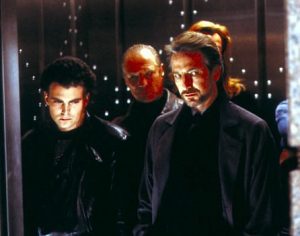 who are destined to go down in history as the terrorists with the best hair ever, the black computer hacker, the overbearing but incompetent FBI guys, the police chief or deputy chief who’s become a political weevil, the TV reporter who was Ron Burgundy before Ron Burgundy, etc., etc.., etc., with the most unbelievable thing probably being the ex who secretly wants her estranged husband back. Really.
who are destined to go down in history as the terrorists with the best hair ever, the black computer hacker, the overbearing but incompetent FBI guys, the police chief or deputy chief who’s become a political weevil, the TV reporter who was Ron Burgundy before Ron Burgundy, etc., etc.., etc., with the most unbelievable thing probably being the ex who secretly wants her estranged husband back. Really.
And yet… it all works. It’s just great fun.
Acting and Production
Two powerful performances anchor Die Hard: Bruce Willis as Detective John McClane, the first action role for a man who was, up until then, and never thereafter, known as a comedic actor…  …and Alan Rickman’s perfect villain, Hans Gruber. “I am not a common thief,” Gruber seethes, when accused of just that. “I am an exceptional thief!”
…and Alan Rickman’s perfect villain, Hans Gruber. “I am not a common thief,” Gruber seethes, when accused of just that. “I am an exceptional thief!”  He is an urbane terrorist, or criminal; he has an eye for Savile Row tailoring, and his personal theme in the soundtrack is the chorale motif from Beethoven’s 9th Symphony. The Hans Gruber role could easily have turned into an over-the-top example of scenery-chewing, in the hands of a lesser actor.
He is an urbane terrorist, or criminal; he has an eye for Savile Row tailoring, and his personal theme in the soundtrack is the chorale motif from Beethoven’s 9th Symphony. The Hans Gruber role could easily have turned into an over-the-top example of scenery-chewing, in the hands of a lesser actor.
Other actors who keep the audience entertained are Richard VelJohnson as a solid LAPD cop, stuck on desk-sergeant duty because he could never fire at a human again after being cleared in a mistaken shooting of a teenager whose “gun” was a toy ray gun… …and William Atherton’s repulsively narcissistic TV reporter.
The incomplete, under-construction Nakatomi Tower was actually 20th Century Fox’s Fox Tower which was at the time incomplete and under construction. While the 30th Floor set was constructed for the production, the under-construction floors were used more or less “as is.”
Accuracy and Weapons
Guns are front and center in the film. Early on, a traveler is alarmed to see that John McClane is armed. “I’m a cop,” McClane explains, cluing in both the traveler and the audience — well-done exposition. His sidearm is a Beretta 92, then riding high in public esteem. The “terrorist” gang are armed with suitably Teutonic MP5s, the iconic movie gun of the period, an AUG, and German pistols. Hans Gruber himself wields an elegant HK P7M13, which he uses to terrify people, to kill people who displease him, and is still gripping as he plummets from the Nakatomi Tower.
When McClane kills his first terrorist, he takes his MP5 and delivers the body to Gruber, with a mocking note: “Now I have a machine gun. Ho-ho-ho!”
The weapons generally aren’t used very realistically. There’s a great deal of MP5 spray-and-pray, although the film does stop just short of “dual-wielding whilst flying through the air.” There’s even some M60 machine gun spray-and-pray from helicopters, something that you’d think the real FBI would never sign off on, but then, Waco was right around the corner, so maybe the scriptwriter had a man on the inside.
One of the best, and most accurately acted, scenes was the fall of Hans Gruber. He was on a green-screen set and dropped on a rope with some 45-50 feet of slack, reaching a full stretch of about 70 feet. But Rickman was misled about when the drop would come, with the result that he was dropped before he was expecting it. Rickman wasn’t just acting terrified!
Of course, the director couldn’t resist milking that scene with slow motion. For all the realism in that scene, the show is full of fireball explosions and other Hollywood special effects. Although they do use flash-to-white and hold for a couple seconds to very accurately simulate the effect of a flashbang, and deserve credit for that.
 There are several examples of Hollywood Leap and Fall Physics®, which are no more accurate here then they are when Wile E. Coyote skedaddles off the cliff-edge of a mesa. one of the worst is when Willis’s character misses the point he leapt to and catches a window further down. Kids, don’t try this at home: acceleration is not your friend in this situation.
There are several examples of Hollywood Leap and Fall Physics®, which are no more accurate here then they are when Wile E. Coyote skedaddles off the cliff-edge of a mesa. one of the worst is when Willis’s character misses the point he leapt to and catches a window further down. Kids, don’t try this at home: acceleration is not your friend in this situation.
Kids, don’t try this at home!
The bottom line
 We (Your Humble Blogger and the Blogbrother) saw this in one of Big City’s multiscreens as one of their “old movie classic” screenings. It was a great way to see a great film.
We (Your Humble Blogger and the Blogbrother) saw this in one of Big City’s multiscreens as one of their “old movie classic” screenings. It was a great way to see a great film.
Die Hard is not just a great action movie, it’s the best Christmas movie ever.
For more information
These sites relate to this particular film.
- Amazon.com DVD page:
https://www.amazon.com/Die-Hard-Bruce-Willis/dp/B000O77SRC
- IMDB page:
http://www.imdb.com/title/tt0095016/
- IMFDB page:
http://www.imfdb.org/wiki/Die_Hard
- Rotten Tomatoes review page (92%):
https://www.rottentomatoes.com/m/die_hard/
- Infogalactic page (replaces Wikipedia):
Weaponsman Expert Book Reviews Nº. 5
 Expert! That’s us. Certified by the Weaponsman Board of Experts.
Expert! That’s us. Certified by the Weaponsman Board of Experts.
We put books into five categories:
- Read It Even if you Gotta Buy It;
- Get it at the Library;
- Read it if You’re a Specialist;
- Don’t Waste Your Time Reading It. And, last but not least:
- We read it, but we’re still not sure.
We also try to sneak in an online bonus reading suggestion or two, sometimes.
We link the titles to the book on Amazon; as a rule of thumb we link to the most economical option. We’re not yet an Amazon affiliate, though.
Read It Even if you Gotta Buy It
 Monster Hunter Memoirs: Grunge by John Ringo and Larry Correia. This is the latest in the Monster Hunter series, but it’s also the first of a new series, a collaboration between the productive John Ringo and series originaror Larry Correia. It introduces new characters and a new period, the 1980s in Seattle. It’s very different in tone from Larry’s novels, but it’s an absolute blast, and the more of the 80s you remember, the more you’ll like it.
Monster Hunter Memoirs: Grunge by John Ringo and Larry Correia. This is the latest in the Monster Hunter series, but it’s also the first of a new series, a collaboration between the productive John Ringo and series originaror Larry Correia. It introduces new characters and a new period, the 1980s in Seattle. It’s very different in tone from Larry’s novels, but it’s an absolute blast, and the more of the 80s you remember, the more you’ll like it.
Of course, maybe stories of humans blowing away (And if you like Grunge, you’ll like its sequel, Monster Hunter Memoirs: Sinners, too; it’s set in New Orleans). Note that links are to the Kindle editions; we read them in the more expensive hardcover, and the paperbacks won’t be out till midsummer 2017.
Get it at the Library
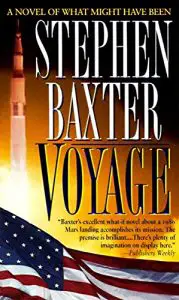 Voyage by Stephen Baxter. Before there was Andy Weir and The Martian, there already was a serious story about journey to Mars, Stephen Baxter’s The Voyage. It’s an “alternate history” in which Nixon decided to cut Apollo moon flights a lot and build towards an Apollo-based mission to Mars in the 1980s, instead of cut Apollo a little and build the Space Shuttle. (The latter is what happened in the real-world timeline). We’ve linked to the Kindle version, but we read a library-surplus hardcover that we bought for $1 from a library thrift store. If there is a better entertainment value than used books, we surely can’t think of what it is.
Voyage by Stephen Baxter. Before there was Andy Weir and The Martian, there already was a serious story about journey to Mars, Stephen Baxter’s The Voyage. It’s an “alternate history” in which Nixon decided to cut Apollo moon flights a lot and build towards an Apollo-based mission to Mars in the 1980s, instead of cut Apollo a little and build the Space Shuttle. (The latter is what happened in the real-world timeline). We’ve linked to the Kindle version, but we read a library-surplus hardcover that we bought for $1 from a library thrift store. If there is a better entertainment value than used books, we surely can’t think of what it is.
No, it’s got nothing about weapons (although it breaks from our timeline by twisting the Kennedy assassination), but it’s got all kinds of cool retro tech. Like Weir’s The Martian, Voyage is an aspie’s delight of deep immersion in the problems of interplanetary travel and some of their solutions. Unbeknownst to us, this book was the first of a trilogy. We’re looking forward to reading the others.
Mr Mercedes by Steven King. Yes, King is a lefty who hates us gun-owners all. He’s also a novelist of staggering talent and considerable work ethic who has produced interesting works, mostly in the horror genre, for a lifetime. You don’t have to agree with the artist to appreciate the art, do you?
Mr Mercedes is a King entry in a genre not usually associated with him, the police procedural. He takes stock characters: the crazed killer; the retired, over-the-hill cop with one last job in him; and infuses them with three-dimensional reality. He even makes a stock character of current fiction — the black computer genius — believable, even to guys who have worked in tech.
He’s so good at getting inside the head of weirdos who kill people, that we worry about the guy, sometimes. But he’s also good at getting inside the head of weirdos who do good, and one of the most interesting characters in Mr Mercedes is a mentally fragile, medicated woman.
The book is the first in a trilogy; each begins with the same horrifying mass murder from the viewpoint of a different set of victims or responders. In keeping with modern publishing, they’re very overpriced, but used copies can be had for much less (buying them from Amazon usually incurs a $4 postage charge, though, even if the book only sells for a penny).
Read it if You’re a Specialist
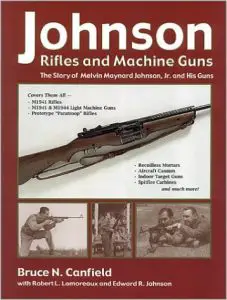 Johnson Rifles and Machine Guns by Bruce N. Canfield. Anything of Canfield’s that we have read is enjoyable reading for the gun geek, and packed with carefully curated information. This book, which is at once a commercial and technical history of one of the most-discussed (and least-used) US weapons systems of World War II, is valuable to the Johnson collector or fan. It has a great deal of information about Melvin Johnson’s invention, industrial efforts, and his long and quixotic battle to get his rifle and machine gun adopted or even tested by the United States military.
Johnson Rifles and Machine Guns by Bruce N. Canfield. Anything of Canfield’s that we have read is enjoyable reading for the gun geek, and packed with carefully curated information. This book, which is at once a commercial and technical history of one of the most-discussed (and least-used) US weapons systems of World War II, is valuable to the Johnson collector or fan. It has a great deal of information about Melvin Johnson’s invention, industrial efforts, and his long and quixotic battle to get his rifle and machine gun adopted or even tested by the United States military.
Johnson’s efforts at winning Government approval fell short, but thanks to the care the US Marine Corps took with their ex-Dutch Johnson M1941 rifles, the majority of these arms survived to be prized by today’s collectors.
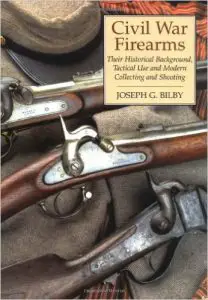 Civil War Firearms: Their Historical Background and Tactical Use by Joseph G. Bilby. Bilby is a unique combination of shooter, collector and historian, so if you are any of those things, or generally interested in the arms of the American Civil War, this book is very worthwhile for you. The weapons used by Union and Confederate forces were varied in type, operating system, combat utility and nation of origin, and Bilby is the perfect guy to explain them to readers with an interest and any level of prior knowledge, from zero to expert.
Civil War Firearms: Their Historical Background and Tactical Use by Joseph G. Bilby. Bilby is a unique combination of shooter, collector and historian, so if you are any of those things, or generally interested in the arms of the American Civil War, this book is very worthwhile for you. The weapons used by Union and Confederate forces were varied in type, operating system, combat utility and nation of origin, and Bilby is the perfect guy to explain them to readers with an interest and any level of prior knowledge, from zero to expert.
Note that while we linked to the current paperback edition for those that want a new book, we got a perfect-condition used hardcover for less money, including shipping.
Don’t Waste Your Time Reading It
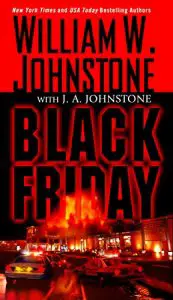 Black Friday by William W. Johnstone with J.A. Johnstone. We were disappointed by the novel Black Friday, which is credited to prolific Western writer William Johnstone, who was born in 1938 and has been dead since 2005, and his niece J.A. Johnstone, who has a publication schedule (about a novel a month) that makes one suspect a small army of ghostwriters is at work.
Black Friday by William W. Johnstone with J.A. Johnstone. We were disappointed by the novel Black Friday, which is credited to prolific Western writer William Johnstone, who was born in 1938 and has been dead since 2005, and his niece J.A. Johnstone, who has a publication schedule (about a novel a month) that makes one suspect a small army of ghostwriters is at work.
The story is the classic hadji-terrorist-in-a-shopping-mall yarn, and it’s been better done before, notably in Stephen Hunter’s 2011 Soft Target.
The Kindle edition is overpriced, which is the publisher’s fault, not the authors’.
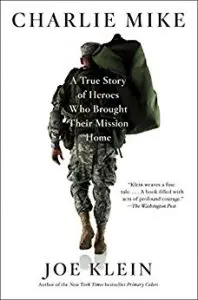 Charlie Mike: A True Story Of Heroes Who Brought Their Mission Home by Joe Klein. This book seems to have been one of several attempts by the Acela Corridor Media establishment to launch the political career of a former SEAL officer named Eric Greitens, who actually never served as an operational SEAL; in a temporary assignment as a SWCC commander he turned in some sailors and an officer who were using and selling drugs, and this act of conscience, which ensured his unit’s integrity, got the Blue Falcon label applied to Greitens, fairly or not. Even by SEAL standards, Greitens is monumentally ambitious and spotlight-seeking. Joe Klein tells the story of Greitens’s and others’ forays into the world of public service, but you are always left with the slightly uncomfortable feeling that everything, to Greitens, is solely valued based on its utility to his career. In the end, an attempted hagiography wound up putting this reader off. What we don’t need is more camera-chasing professional veterans pimping a “vets are damaged goods” narrative.
Charlie Mike: A True Story Of Heroes Who Brought Their Mission Home by Joe Klein. This book seems to have been one of several attempts by the Acela Corridor Media establishment to launch the political career of a former SEAL officer named Eric Greitens, who actually never served as an operational SEAL; in a temporary assignment as a SWCC commander he turned in some sailors and an officer who were using and selling drugs, and this act of conscience, which ensured his unit’s integrity, got the Blue Falcon label applied to Greitens, fairly or not. Even by SEAL standards, Greitens is monumentally ambitious and spotlight-seeking. Joe Klein tells the story of Greitens’s and others’ forays into the world of public service, but you are always left with the slightly uncomfortable feeling that everything, to Greitens, is solely valued based on its utility to his career. In the end, an attempted hagiography wound up putting this reader off. What we don’t need is more camera-chasing professional veterans pimping a “vets are damaged goods” narrative.
Greitens is the Governor-Elect of Missouri, after a 2015 party change to Republican (one wonders what Klein, who was so eager to promote him when he was a Democrat, thinks of that), and we’re told that news reports there have said he favors waiting periods for firearms.
We Read It, But We’re Still Not Sure
Nothing in this category this time out. We had put Klein’s Charlie Mike in there, but we reconsidered it and demoted it to the don’t-bother bin. The price of both Kindle and paperback being an unreasonable $12-13 was the deciding factor. Overpriced for its quality by an order of magnitude.
To the Readers:
Our objective had been to do two of these in an average month. But we got off schedule; this one is overdue by ages. Our last, Weaponsman Expert Book Reviews Nº 4, ran months ago. We not only think this is a better thing to post than a When Guns are Outlawed on Christmas Eve, we also really want to live up to that, going forward, or at least do one a month. We’ll see, eh?
In the New Year, we plan to become an Amazon affiliate so that if you buy a book from one of our links, it throws us a few cents.
For previous capsule reviews:
- 19 February 16. Weaponsman Expert Book Reviews Nº 1. Link.
- 08 March 16. Weaponsman Expert Book Reviews Nº 2. Link.
- 24 March 16. Weaponsman Expert Book Reviews Nº 3. Link.
- 19 April 16. Weaponsman Expert Book Reviews Nº 4. Link.
Literature of War: The Land Ironclads (H.G. Wells)
Wells is remembered today primarily for his imaginative science fiction novels The War of the Worlds and The Time Machine, both absolute milestones in the developing field. He’s less well known for his shallow socialist politics, and his works that tend towards the didactic, like In the Time of the Meteor and Things to Come did not hold up nearly as well.
But his short story The Land Ironclads, although much less developed than his novels, describes a near-future war with the prescience normally associated with his French counterpart Jules Verne; the decisive weapon of this war is the Land Ironclad, which is now known to the world as a Tank. But he published the story in 1903, a dozen years before tank development began; one wonders if this story was known to, and influenced, the builders of the early armored fighting vehicles. Consider this: the word “tank” was originally a cover name, to conceal the fact that the British were developing a “Landship” or “Land Dreadnought.’ Did they get the idea from Wells? Or was it just one of those ideas whose time was coming, at the hand of one man if not another?
Like Verne, Wells gets some details of his imagined machine wrong (the “footed” wheels he describes were actually used on some WWI field pieces, but tanks had the caterpillar track; and tanks would run on Otto-cycle internal combustion engines, not steam) but others were very interesting. The Land Ironclads come up to solve a problem of… trench warfare. (And recall, this story predates not only the Great War but also the Russo-Japanese War, often held up as an example military officer botched the chance to learn from. Consider his description of how a group of riflemen would work inside the Land Ironclad.
The riflemen each occupied a small cabin of peculiar construction and these cabins were slung along the sides of and before and behind the great main framework, in a manner suggestive of the slinging of the seats of an Irish jaunting-car. Their rifles, however, were very different pieces of apparatus from the simple mechanisms in the hands of their adversaries.
These were in the first place automatic, ejected their cartridges and loaded again from a magazine each time they fired, until the ammunition store was at an end, and they had the most remarkable sights imaginable, sights which threw a bright little camera-obscura picture into the light-tight box in which the rifleman sat below. This camera-obscura picture was marked with two crossed lines, and whatever was covered by the intersection of these two lines, that the rifle hit. The sighting was ingeniously contrived. The rifleman stood at the table with a thing like an elaborately of a draughtsman’s dividers in his hand, and he opened and closed these dividers, so that they were always at the apparent height—if it was an ordinary-sized man—of the man he wanted to kill. A little twisted strand of wire like an electric-light wire ran from this implement up to the gun, and as the dividers opened and shut the sights went up and down. Changes in the clearness of the atmosphere, due to changes of moisture, were met by an ingenious use of that meteorologically sensitive substance, catgut, and when the land ironclad moved forward the sites got a compensatory deflection in the direction of its motion. The riflemen stood up in his pitch-dark chamber and watched the little picture before him. One hand held the dividers for judging distance, and the other grasped a big knob like a door-handle. As he pushed this knob about the rifle above swung to correspond, and the picture passed to and fro like an agitated panorama. When he saw a man he wanted to shoot he brought him up to the cross-lines, and then pressed a finger upon a little push like an electric bell-push, conveniently placed in the center of the knob. Then the man was shot. If by any chance the rifleman missed his target he moved the knob a trifle, or readjusted his dividers, pressed the push, and got him the second time.
This rifle and its sights protruded from a porthole, exactly like a great number of other portholes that ran in a triple row under the eaves of the cover of the land ironclad. Each porthole displayed a rifle and sight in dummy, so that the real ones could only be hit by a chance shot, and if one was, then the young man below said “Pshaw!” turned on an electric light, lowered the injured instrument into his camera, replaced the injured part, or put up a new rifle if the injury was considerable.
Do not mistake this, though, for being all technology and no drama and humanity. Here, for instance, is the portrait Wells paints in a paragraph of a Land Ironclad captain and his crew:
He was a young man, healthy enough but by no means sun-tanned, and of a type of feature and expression that prevails in His Majesty’s Navy: alert, intelligent, quiet. He and his engineers and his riflemen all went about their work, calm and reasonable men. They had none of that flapping strenuousness of the half-wit in a hurry, that excessive strain upon the blood-vessels, that hysteria of effort which is so frequently regarded as the proper state of mind for heroic deeds.
And the whole theme of the story is not, as you might think, man versus machine, but more what sort of man would fight in these machines (“devitalized townsmen”) and what sort would do without (“brutes,” “cunning, elementary louts,” from “our open-air life”).
For these reasons alone we could recommend The Land Ironclads, and advise you to go Read The Whole Thing™. But the very best part of it, which we shall not spoil for you, is Wells’s portrait of his point of view character, the War Correspondent (who is never named, beyond that). If you believe that the schism between soldier and scribe is a new thing, do read this story.
As an little something extra, here is a Librivox recording of the story, so you can listen instead of read.
May this Christmas bring war only in fiction, science or otherwise!

Kevin was a former Special Forces weapons man (MOS 18B, before the 18 series, 11B with Skill Qualification Indicator of S). His focus was on weapons: their history, effects and employment. He started WeaponsMan.com in 2011 and operated it until he passed away in 2017. His work is being preserved here at the request of his family.

